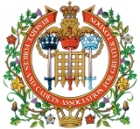 Voluntary Aid Detachments
Voluntary Aid Detachments
The Territorial and Reserve Forces Act of 1907 made provision for a Voluntary organisation that could ally itself to the General Hospitals of the RAMC Territorial Force Detachments.
The Organisation came into being in 1909 with the raising of Voluntary Aid Detachments. Each detachment was attached to either the British Red Cross, The Order of St John or the County Territorial Force Association. Individually, the membership was known as VADs.
The detachments were either all male or all female. Most volunteers were female. The detachments were registered with and numbered by the War Office.
Each VAD received training in first aid and general nursing duties, and were expected to work in support of nursing professionals, and have a flexible approach to any task that they were asked to undertake from cleaning and cooking to ambulance driving.
At the outbreak of WW1, most male VADs had volunteered to serve in the Forces. There were in excess of 45,000 women serving in Voluntary Aid Detachments nationwide.
VADs, like the Territorials, were only intended for home service. However, like the Territorials, they were asked to serve overseas fairly soon after war was declared, seeing service in support of the army medical services in France, Belgium and Italy.
VADs worked in support of the RAMC Territorial Force (TF) in 5 military hospitals in London:
First London General Hospital (TF)
St Gabriel's College, Cormont Road, Camberwell, SE5
Second London General Hospital (TF)
St Mark's College, 552 King's Road, Chelsea, SW3
Third London General Hospital (TF)
Royal Victoria Patriotic School, Trinity Road, Wandsworth, SW18
Fourth London General Hospital (TF)
King's College Hospital, Denmark Hill, SE5
Fifth London General Hospital (TF)
St Thomas' Hospital, Lambeth Palace Road, SE1
Additionally, there were in excess of 300 Auxiliary Hospitals situated all over the Greater London area that were voluntarily staffed by the local Voluntary Aid Detachment.
Between the wars, VADs continued their voluntary work. The original controlling body, the Central Joint VAD Committee was reorganised as the Voluntary Aid Detachment Council operating in an advisory capacity only. After WW1, VADs decreased in strength, however in the Greater London area this trend was reversed by the onset of WW2. VADs were now classed as ‘mobile' or ‘immobile' – the former on mobilisation being liable for postings to wherever hospitals required their services, and the latter being liable for service only in the neighbourhood in which they resided. In 1938, ‘immobile' members were released from their obligations.
On the outbreak of WW2, all male VADs were enlisted into the RAMC. Women members were mobilised as and when required for services in Military Hospitals. In 1942, as a result of the extension of compulsory National Service for women, the Army Council proposed a merger of women members of the VADs and the Auxiliary Territorial Service (ATS). This unpopular proposal was eventually dropped and the VADs kept their separate identity.
There was now set in place several changes to the terms of service and the Central Joint VAD Council that had acted as an advisory body between the wars was replaced by a standing committee that was made up, as in WW1, of representatives of the Council of County Territorial Associations.
During WW2, members of the VAD were once again engaged in providing nursing and general support to the medical organisations of all 3 services, both overseas and in the UK.
The last member of the VAD was still serving with the Army in 1951.
